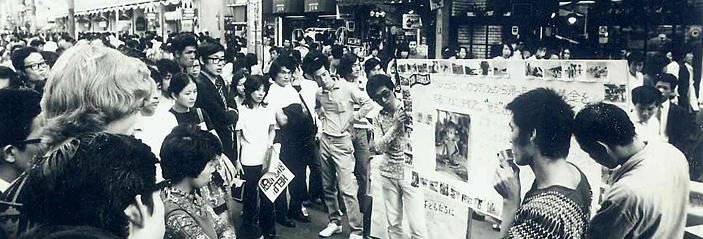
Learning from failures, evolving Shapla Neer
Witnessing development aid full of contradictions

In the spring of 1972, about 50 Japanese youth went to Bangladesh, a country recently independent just the year before, as “Bangladesh Agriculture Reconstruction Volunteers”.
These volunteers heard and saw development aid full of contradictions. Those benefiting from aid were people already rich, while the bulk of the population, most of whom were poor, received nothing. At the same time, many of the Japanese youth became strongly attracted to the beautiful nature and humanity of the people of Bangladesh.
As a result, an organization was formed in order to have continued work there. After returning to Japan, some of the youth formed “Help Bangladesh Committee” (HBC), predecessor to what is now Shapla Neer. Funds for HBC was made by collecting donations in the open streets of Shinjuku.
The first failure — the story of notebooks and pencils —

The first thing HBC did was to go into the villages of Bangladesh and distribute notebooks and pencils to the children. Through the war of independence, and natural disasters such as drought and cyclones, Bangladesh was in a desperate condition. Goods from all over the world came to Bangladesh. However, they all disappeared before arriving to the villages. When HBC members arrived, the village people were delighted, saying “it is the first time any goods came to our village”. However, the next day, when we visited the village market, many of the notebooks and pencils that were distributed just yesterday were being sold. This was our first failure. We had an illusion that if we gave children notebooks and pencils, they will be able to go to school the next day. In recently independent Bangladesh, there were many who died from hunger. The children probably sold the stationary to change it to food, so they can stave off hunger. We, who criticized government aid as useless, made the same mistake.
Beginning of Japanese staff living in Bangladesh — the failure where we took the central role in aid activity —

After much reflection, we sent our members to live in a Bangladesh village. We thought that if we ate what the poor ate, spoke the same language, and lived with them, we would be able to find out what they truly needed. The first things we did were open-air literacy classes and handicraft making by widowed women using jute. This was successful, and the women’s lives improved many-fold.
However, in 1977, our staff office was attacked by a group of robbers, gravely injuring our Japanese staff there, and we had to once again seriously consider our actions. Did our aid become self centered, without fully understanding local culture and customs? Did our actions create new friction?
Turning to Direct Approach -the failure that our staffs became “businessmen”-
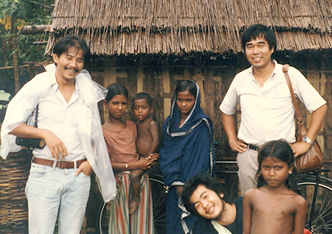
In 1980s, we started to support activities that rural community and youths began for themselves to boost development of their village.
In 1987, we placed a village group under Shapla Neer and shifted our style into direct approach. While this change brought us smooth management of the organization and local activities, our staffs gradually became as if they were businessmen, which means that they think of their activities just as tasks. We have undergone a sudden strike in 1997 and many other complications.
As a Japanese NGO, what can we do in South Asia?
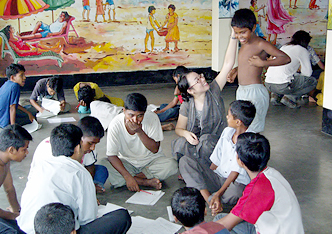
From 1999 to 2005, we split our original office to three independent local NGOs so that local staffs and resident Japanese staffs could be more actively involved in regional problems.
After asking ourselves what we should do as a Japanese NGO, the answer was clear; a Japanese NGO needs to focus on the group of the people in the society that is being neglected. This particular group of people in Bangladesh was created by our economically-developed society. This point of view made us start supporting street children in Dhaka in 2000.
Supporting neglected people
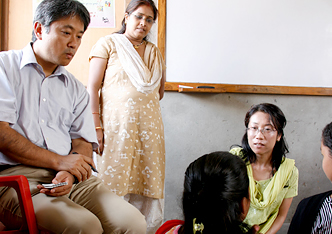
At present, we are supporting activities for people, such as children workers, youths living in areas of disaster or a slum, elders and the disabled, who are left behind from development. We have two staffs in Bangladesh and one in Nepal so that local people could be independently involved in life improvement with NGOs based in Bangladesh or Nepal. Our basic style is “improve our own lives for ourselves.” We have been acting as paying attention to local people not to depend too much on us.
Aiming changes of society and system
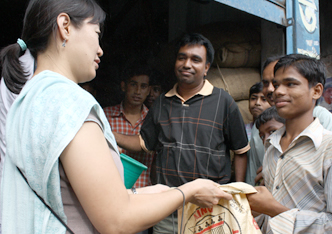
We think it important not only to support left-behind people directly but also to make community itself help the people.
We started on-the-spot cooperation in order to enhance ability, which we call facilitation ability, of our partner organizations to work on society through media and to associate with governments. The results are appearing: In Bangladesh, most of the food supply which is required for school lunch in Drop in Center of street children are provided by shop owners in the communities, and rural people became instructor of cooking school in supporting center for girls domestic workers.
A new keyword: living together
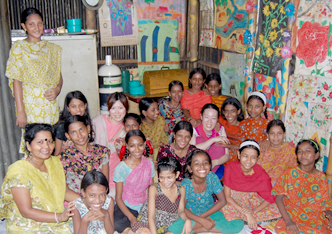
Our original mission was to improve farm lives in Bangladesh. As we do activities, however, we became to feel that these problems were not just theirs but ours.
Seeing Japan through Bangladesh. How we connect problems in Japan with ones in farming area and street children. We would like to cherish this kind of thoughts. “Cooperation” may not be enough. “Living together” is now our new keyword. These activities received the following prizes: Yoshikawa Eiji Cultural Prize, Tokyo Bar Association Human Rights Award, Foreign Minister’s Special Commendation, Mainichi International Award, Asahi Social Welfare Award and Okinawa Peace Prize. Furthermore, our activities are introduced in some textbooks for junior high and high school students.
